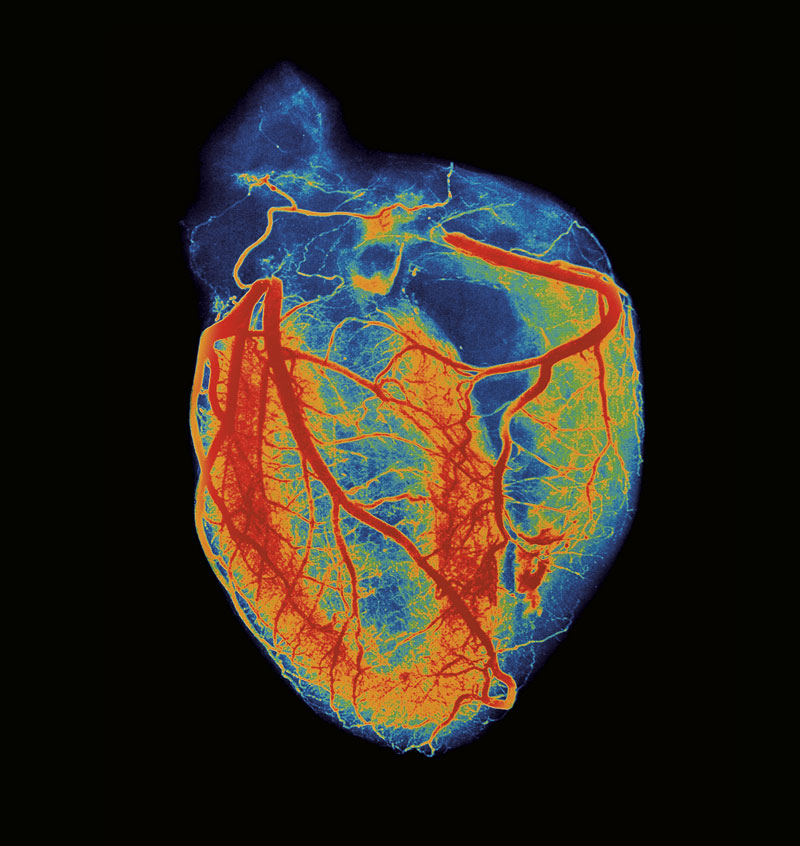
Science Photo Library / FotoarenaX-Ray image (angiogram) gives a detailed view of the arteries of a healthy heartScience Photo Library / Fotoarena
Cardiovascular diseases are the leading cause of death in Brazil. After briefly losing its position to COVID-19, which caused 411,000 deaths in 2021, diseases of the heart and circulatory system are back on top. According to data from the most recent “Global Burden of Cardiovascular Diseases and Risk” report, published in the Journal of the American College of Cardiology in December 2023, 18 cardiovascular diseases claimed the lives of approximately 400,000 Brazilians in 2022, almost equaling the total number of COVID-19 deaths in the worst year of the coronavirus pandemic.
The report is part of a broader study called the Global Burden of Diseases (GBD), which involves more than 10,000 scientists, including Brazilians, and has been monitoring 371 causes of death and 88 related risk factors worldwide since 1990. In the 2023 report on cardiovascular diseases, data from Brazil are presented together with Paraguay, which at the time had 6.1 million inhabitants, corresponding to around 3% of the Brazilian population.
In the two countries combined — the only members of the GBD subregion called Tropical Latin America — cardiovascular diseases killed 408,000 people in 2022, an increase of 48.4% over the 275,000 deaths in 1990. The population of the two countries grew by 35.6% in the same timeframe. Globally, deaths from cardiovascular diseases increased at a slightly lower pace, up 39.4% from 12.4 million in 1990 to 19.8 million in 2022, during which time the global population grew by 51%. The separate figures for each country until 2019 are available on the GBD website.
Just two medical issues accounted for the vast majority of deaths in Tropical Latin America in 2022 (76%): myocardial infarction (heart attacks) and cerebrovascular accidents (strokes). There were 170,500 deaths due to heart attacks and 138,400 caused by strokes. “The absolute numbers are rising because the population is increasing and people are living longer,” explains Dr. Paulo Lotufo, an epidemiologist from the University of São Paulo (USP) who contributes to the GBD study.
Despite the increase in cases due to the growing and aging of the population, the situation has been improving in much of the world. The relative number of deaths from cardiovascular diseases adjusted by age, a statistic used to compare data from populations with different age profiles, fell over the last three decades. In Brazil, it declined by 55.6%: from 356 deaths per 100,000 people in 1990 to 158 per 100,000 in 2022. Worldwide, it fell by 35%, from 358 deaths per 100,000 people in 1990 to 233 per 100,000 in 2022.

“Until the 2000s, heart attacks and strokes competed as the leading cause of death in all Brazilian states. Then, better diagnosis and control of high blood pressure caused the death rate from strokes to fall more than deaths by heart attack,” says Luisa Brant, a cardiologist from the Federal University of Minas Gerais (UFMG) who also participated in the GBD survey. The proportion of stroke deaths in every 100,000 total deaths dropped from 138 in 1990 to 58 in 2019, a reduction of 58%. The proportion of all deaths caused by heart attacks fell by 52.5% in the same period, from 158 to 75.
Although hypertension is the biggest risk factor for both, metabolic disorders such as uncontrolled diabetes and high cholesterol — both of which are common among the Brazilian population — contribute more to heart attacks, which are still the leading cause of death in all Brazilian states, explains the researcher.
The improvement observed over the 30-year period has not been uniform, however. “In the 2000s, mortality was higher in larger and richer municipalities, which were the focus of policies designed to combat risk factors and increase access to emergency care,” says Brant. “As cities grow, people start to become more sedentary and consume lower quality foods. We are seeing a migration of cases from states in the Southeast to the North and Northeast, from major capitals to more remote cities, where there is less access to health services,” he concludes.
Although cardiovascular disease is more common among the elderly, experts say that it is not a natural characteristic of aging, rather it is the result of the damage caused by unhealthy habits over many years. Smoking, drinking alcohol, poor sleeping habits, being sedentary, being overweight, and not properly managing diabetes and hypertension are the biggest risk factors for the development of cardiovascular problems.
“An individual who spends a year with high blood pressure faces a higher risk of having a heart attack. If they do not address the problem, then the risk after 20 years is much higher, especially when added to the natural aging of the arteries and other risks and events that generate damage,” explains André Durães, a cardiologist from the Federal University of Bahia (UFBA) who also contributed to the GBD. “For public health strategies to be effective and reduce deaths from cardiovascular problems, all the main risk factors need to be dealt with. It is therefore necessary to expand access to primary healthcare, which is not yet universal, and to raise awareness of the importance of a healthy lifestyle, including a balanced diet and physical activity,” he states.
Scientific articles
MENSAH, G. A. et al. Global burden of cardiovascular diseases and risks, 1990-2022. Journal of the American College of Cardiology. Dec. 2023.
MENSAH, G. A. et al. A heart-healthy and stroke-free world: Using data to inform global action. Journal of the American College of Cardiology. Dec. 2023.